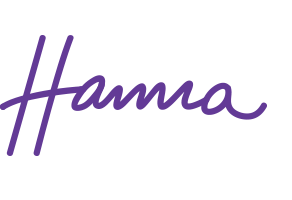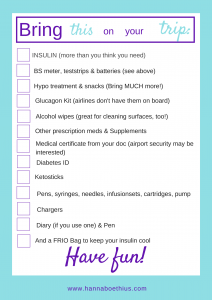Type 1 Thursday – Mindset & Diabetes Management?
How important is mindset in diabetes management? What difference can it make? 🤔
It took me so long before I realized just how big of a deal mindset work is when it comes to diabetes management. How do you react when you see an undesirable number on the display? What are you thinking when you’re faced with a meal you know you won’t feel good eating? And what can you do to help your diabetes management be a success in the long run?
It’s time for Type 1 Thursday!
And – if you want the whole presentation on this topic from me, why don’t you join me at The Low Carb Universe in Mallorca, 12-17 November 2019? Check it out!
And 2 – I do a live every week on Facebook and Instagram to discuss a topic about Type 1 Diabetes that maybe you haven’t discussed with your doctor or healthcare crew. Join me at 6pm CET on Thursday’s!
Have you noticed a shift in your mindset? Or do you need one? Talk to me! 😊
Text Version
If you prefer to read rather than watch a video about mindset, here is a text version of the points I made above:
Mindset
How can mindset can help your diabetes management? How he can help it and what difference can it make, or how can it hinder you?
As I define it, these are my own figures, not at all scientific! This is my experience and from the people that I’ve talked to about this, but I see that having success maintaining a healthy lifestyle, 30% is food and medicine, I see another 30% in other lifestyle factors, movement, hydration, sleep. To actually make your health care successful, I do see that there is a 40% need for mindset, as well. Don’t discount the mindset part because it is very important! And maybe even more important than you know! How exciting is that?
There is a fear of geting caught in a trap of constant perfection. No type 1 diabetic is always perfect. No health cares are ever completely perfect. We all make mistakes. And that’s okay. And that’s a huge part to realise when it comes to mindset! You have to be kind to yourself – that is just the starting point. And do remember that all feelings that you have, whether it’s about diabetes or something else you’re trying to get a better grip of, all feelings are completely and entirely OK! It’s okay to feel them. It’s okay to have them. They are all OK.
“Fixed” vs “Growth”
There is this theory of that we flip flop between what is called a fixed mindset and a growth mindset. (I have a full length presentation on this, join me in Mallorca to find out more!) What I’ve seen from my research, we basically flip flop between these two mindsets depending on the situation, depending on what we’re faced with, actually depending on a lot of factors. As a sort of rule of thumb, a fixed mindset is that you avoid challenges, and that you give up very easily. Making effort is actually a bad thing for you, in the specific situation. You’re “just not talented”. A “why me” mentality usually goes into the fixed one. Running away from critique is also common. Other peoples success is threatening, too. I’m sure we can all recognise some parts of this in ourselves in what we were doing and how we’re reacting to things!
On the other side of the fixed mindset is the growth mindset. A growth mindset is where you seek challenges, you keep trying, even though you maybe fail sometimes and you see making an effort as the key to actually making something a success. You ask yourself, “what can I learn from this situation” rather than, you know, “why me” and “I’m not talented”. Your motto is basically “I can do it”, and other people’s success is inspiring to you.
These are the two mindsets that we flip flop between, depending on how we how we react to things. Also, I think that we are many who can recognise ourselves in the growth mindset. So it’s not all bad! We’re not only, you know, “everything is shit” and “why me” and “I don’t want challenges”. I think we all have parts of both! I find it very interesting when we start paying attention to this. And I’m sure this is something that you can do, for example, in your diabetes management. How do you react to, for example, that blood sugar reading? Is it “why me” or is it “okay, what can I learn from this?”, for example.
Mindset is not…
Mindset is not a magic bullet of motivation. It is definitely not a shortcut to success, if anyone got that, and mindset is nothing that we’re born with, it’s something that we learn. Mindset is not the same as positive thinking, either. It’s also not fixed in these two categories I talked about above. You’re never stuck in one, as I said, we flip flop between both of them.
Diet Mentality
Added to this, more specifically to food, is actually the diet mentality, or diet mindset. I wanted to highlight it, because I think it’s so terrible for lots of people with diabetes, and for anyone really who tries to look out for their health.
A diet mentality is where you see food as the enemy and you’re focusing on your bad habits – that you would have bad habits to break somehow. You’re looking for temporary fixes. And you’re focusing on what you don’t like about yourself, how silly is that? That’s not the way forward, the way forward is to focus on things that you do like about yourself and increase those and then the other ones will follow. Diet mindset is where you’re really focused on the scale. I don’t feel like that is a good measurement of anything really, the scale. I threw out my own scale very many years ago, and I only weigh myself at the doctor’s office, because they require it. Otherwise, I don’t really care what it says. It’s some sort of arbitrary number on a piece of electronic machinery (or even if it isn’t electronic) – it doesn’t really matter that much. Try to step away from the scale! Also in a diet mentality, you think that you have a finish line, that you will have arrived at some point, whatever that means. And I’m only highlighting this because I think it can offset the rest of your mindset work, which can be quite crucial in type one or diabetes management in as a whole.
Setbacks?
How do you view setbacks? Are setbacks something informative to you? Do you draw information out of it? Basically, going back to the growth mindset of “what can I learn”? Or are setbacks a label on you as a person? It’s also silly, but we all get to that point at some points of our lives, and that’s fine. It’s not a bad thing. It’s just something to be aware of!
Success = Mindset + Learning
Success whether within health, whether it’s in sports, whether it’s in life in general, it is mindset, plus learning and the willingness to learn new things. No one can do everything from the beginning. So we do need to learn, in addition to our hopefully, majorly growth mindset work.
How do you change your mindset? This can be a tricky one, but a few short tips is to start small. If you know the analogy of chopping up the elephant into small bite sized pieces, basically eating the frog first? That’s how you get forward so you look at the whole picture first and try to accomplish all of it at once. You have to start with the very smallest goal that you can imagine. Also, you have to think forwards. “How will I feel in a week of doing this?” (or in a day, and a month, in a year, in 10 years?) How will it feel making this change for me? Provided that it is for you, but I would hope so because otherwise it’s not going to be motivating for very long. You have to find what motivates you? No one else can tell you what motivates you, you have to find that within yourself. And that’s a very big part of mindset work!
And also, don’t make excuses. It’s all about prioritising. You can say that, “oh, I don’t have time to check my blood sugar”, but today, especially with CGM’s and these very fast blood sugar meters, it’s really quick. It’s just that you don’t want to do it. It’s that simple. So please don’t make excuses for yourself.
And now I would actually love to hear from you, have you noticed a change in a change in your mindset? Or perhaps you need a change of mindset? Talk to me in the comments below and I’d be happy to chat with you more there.












